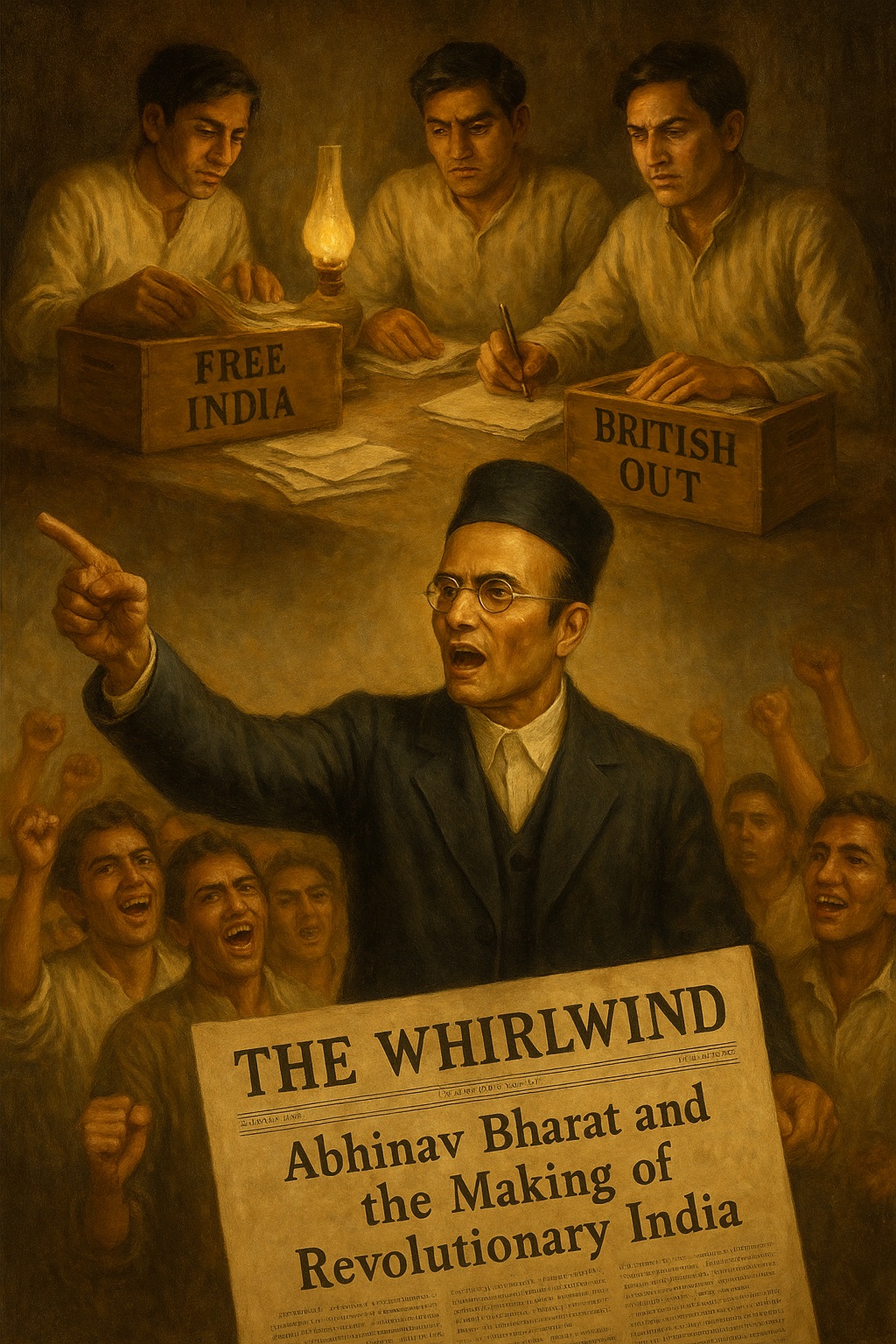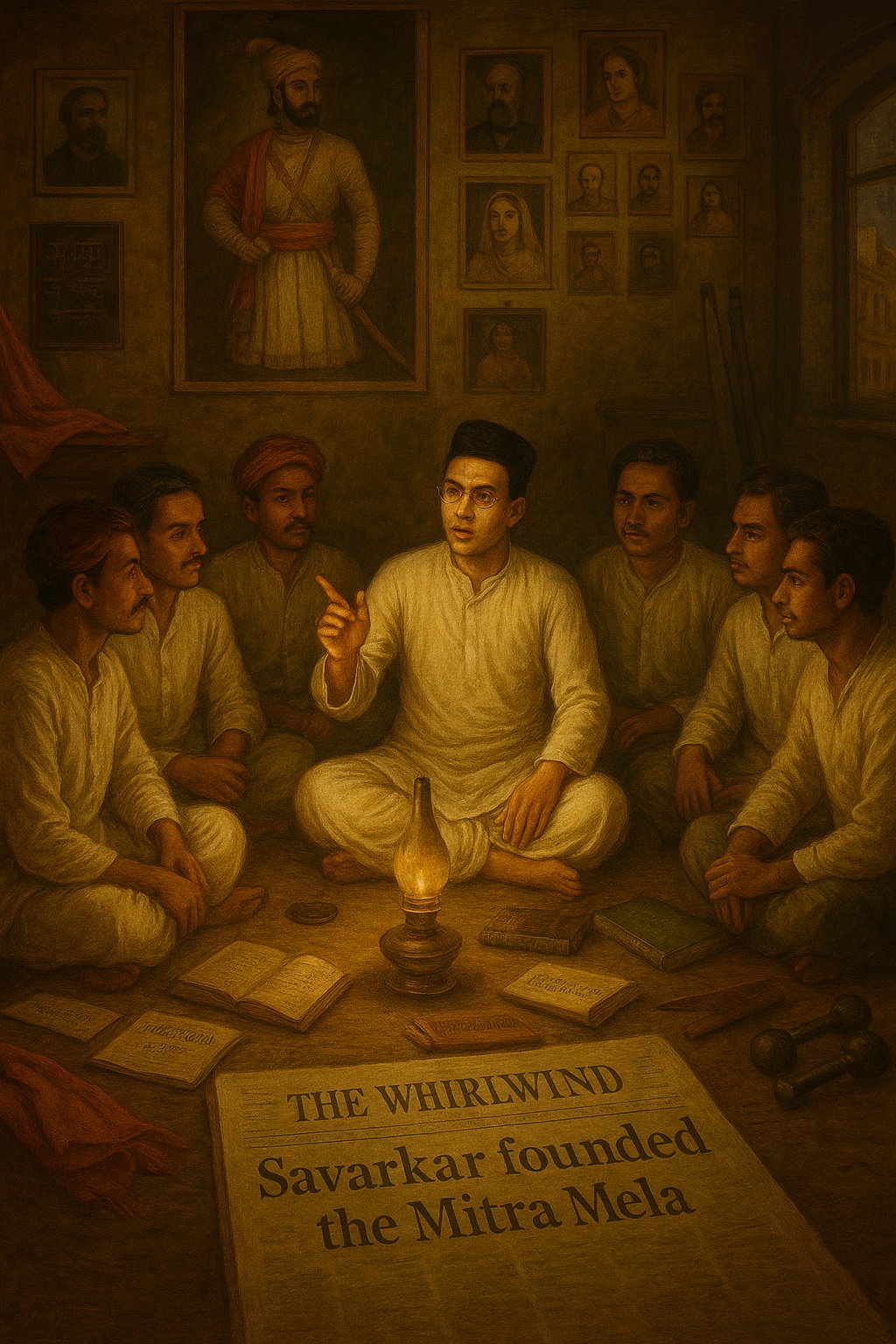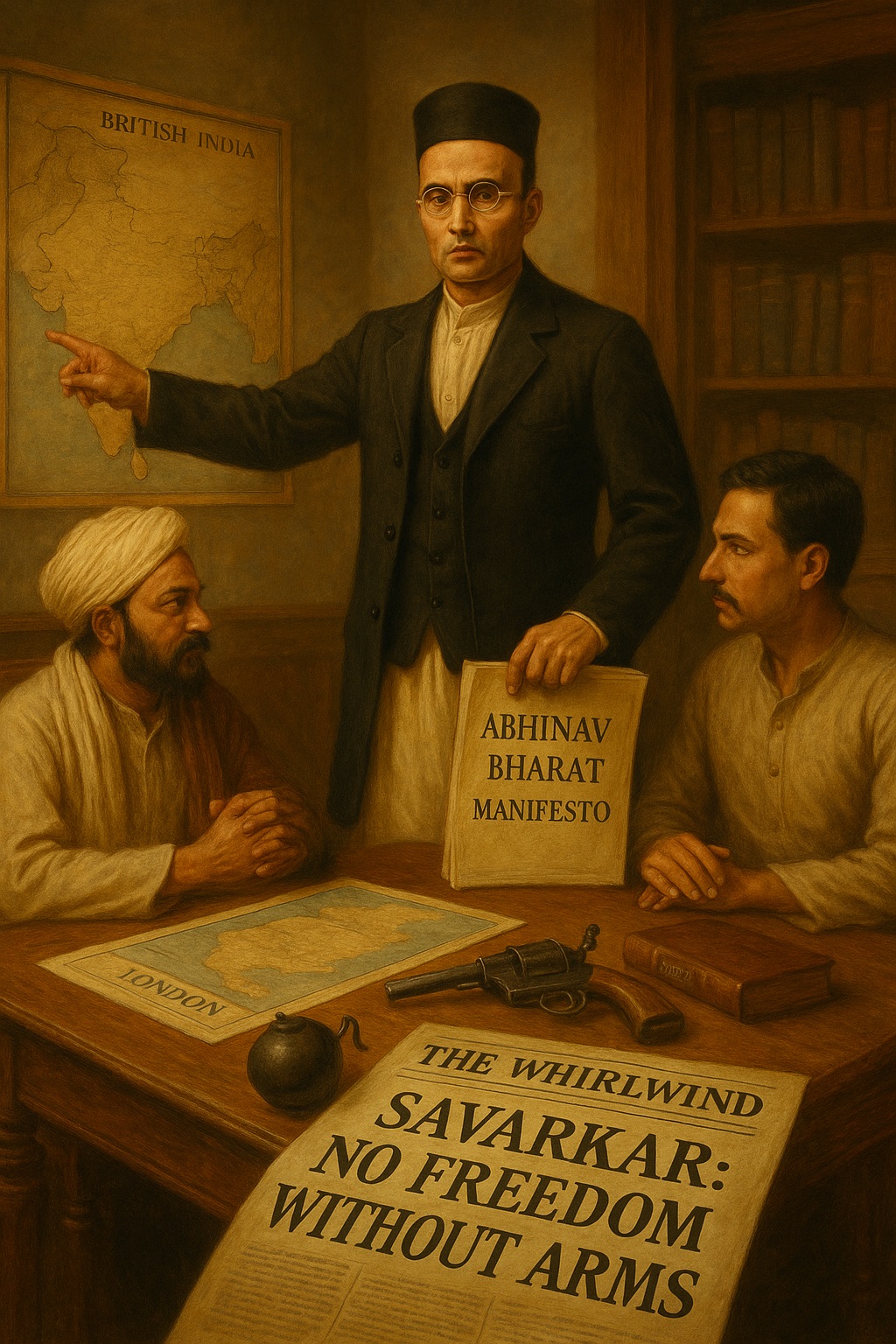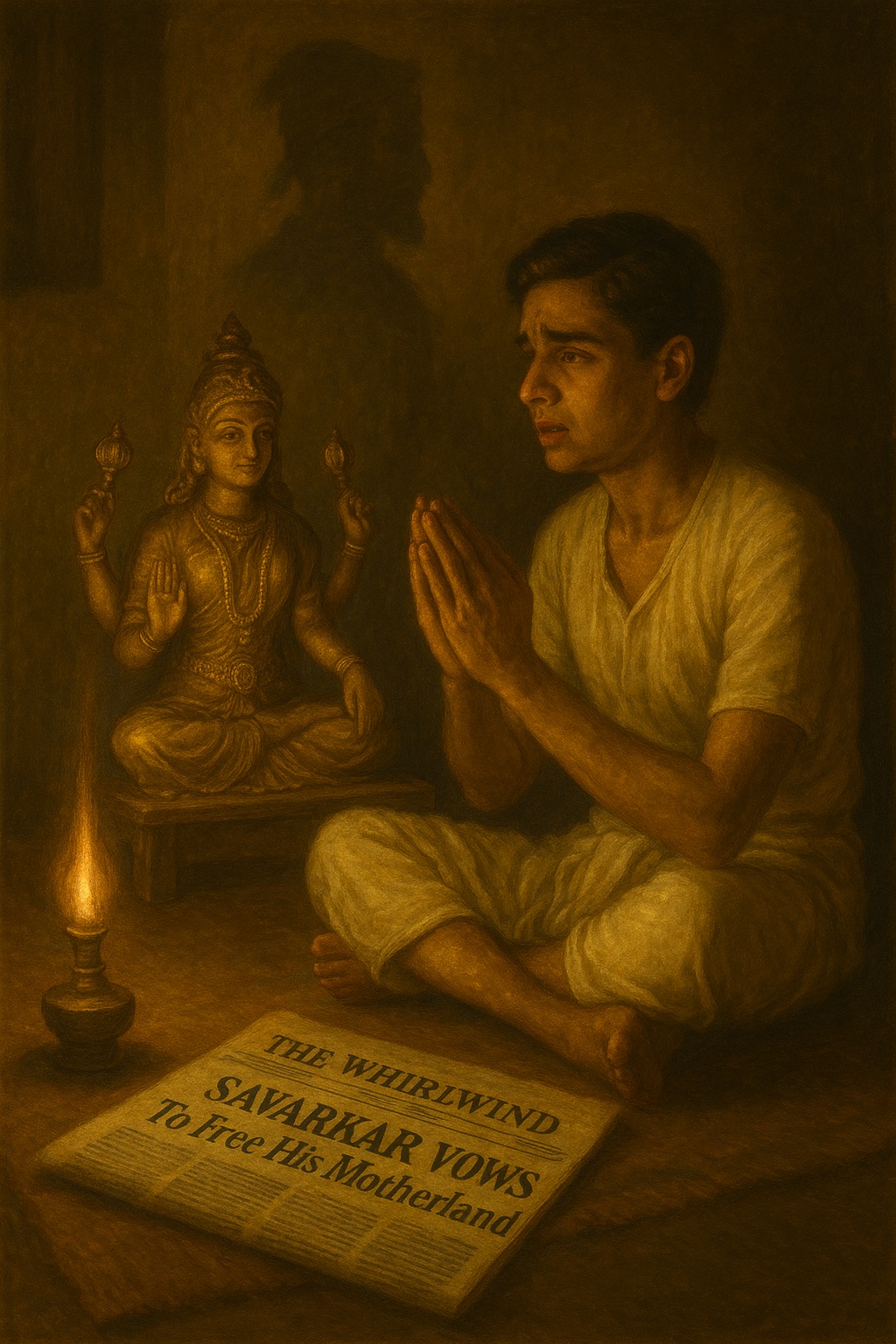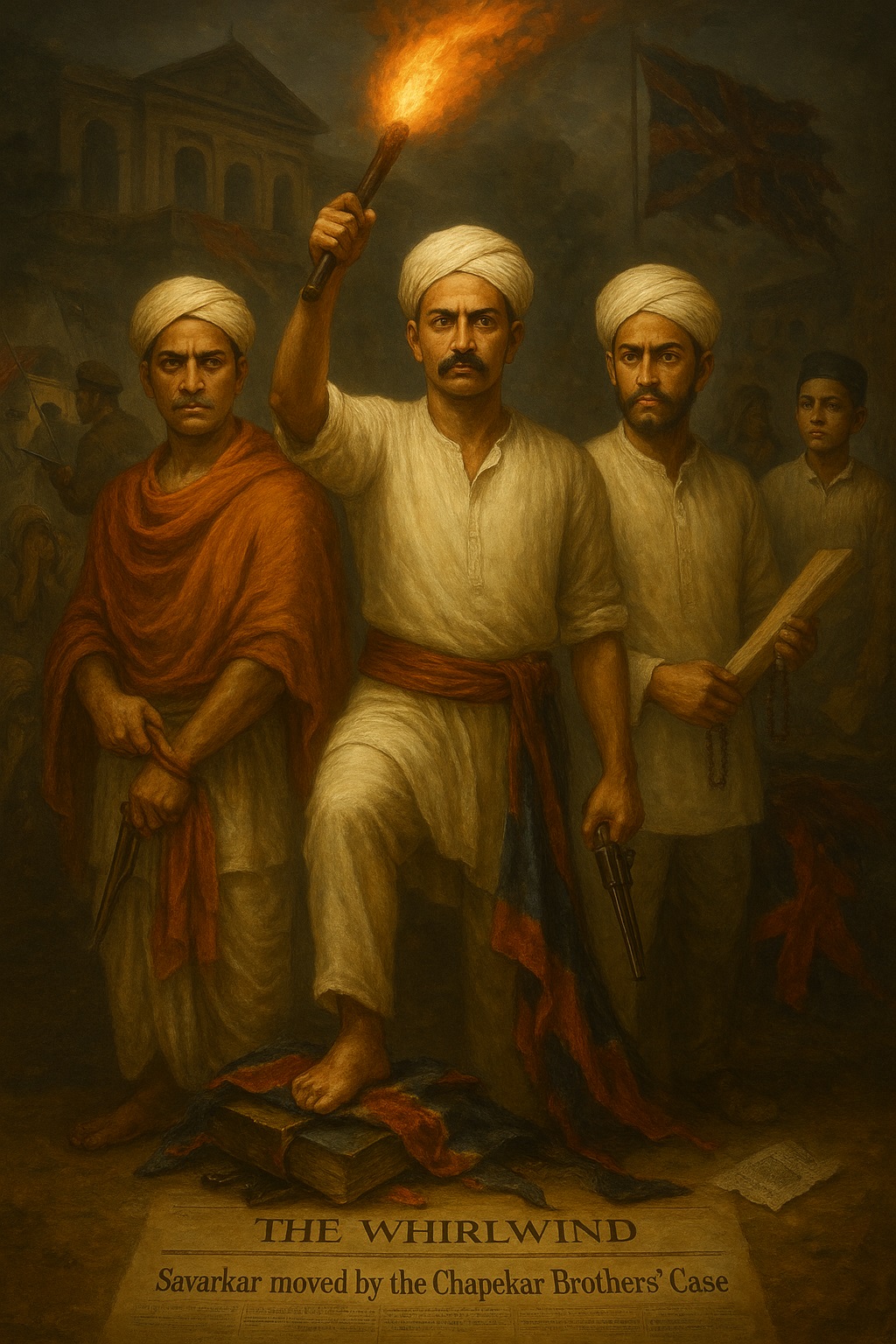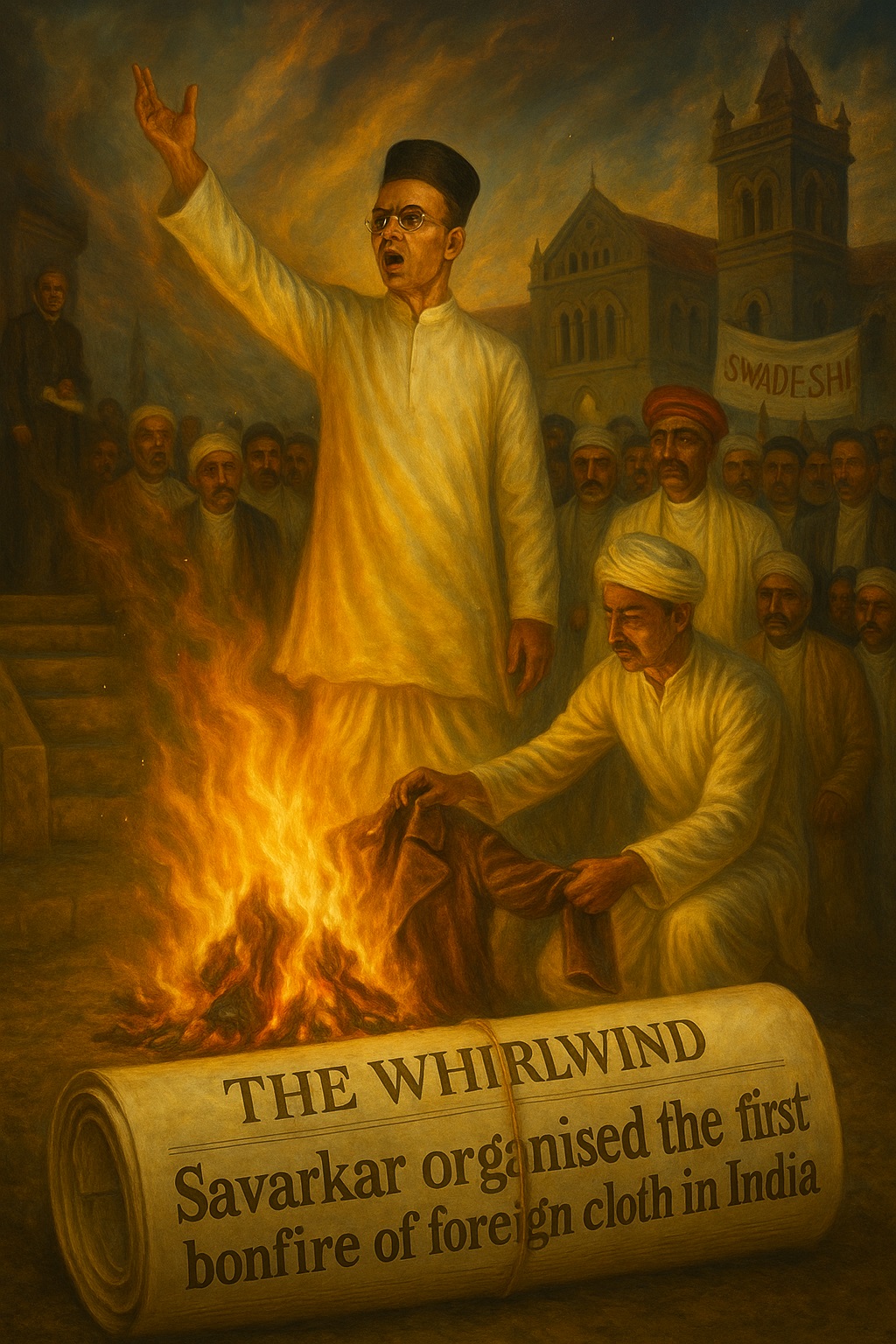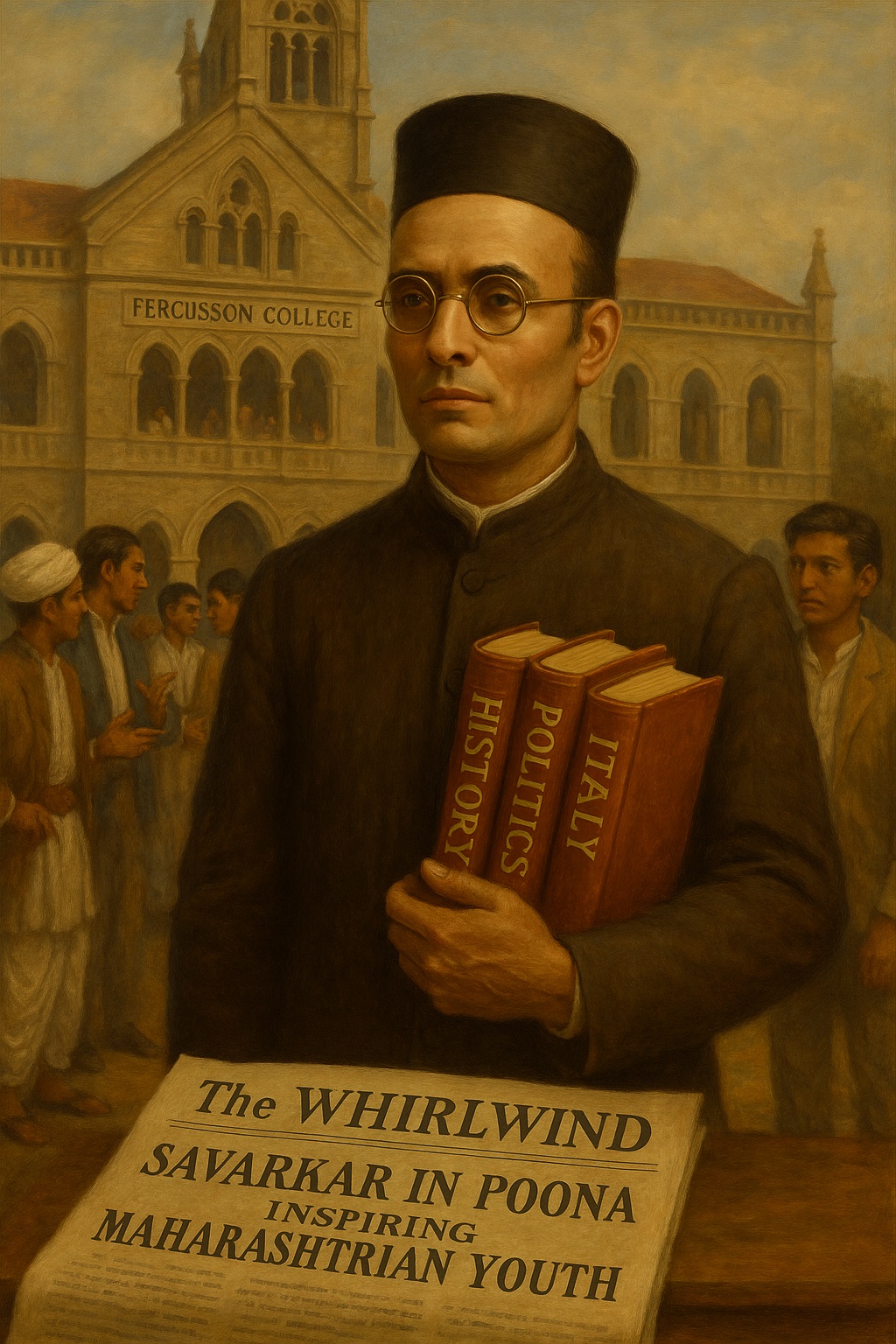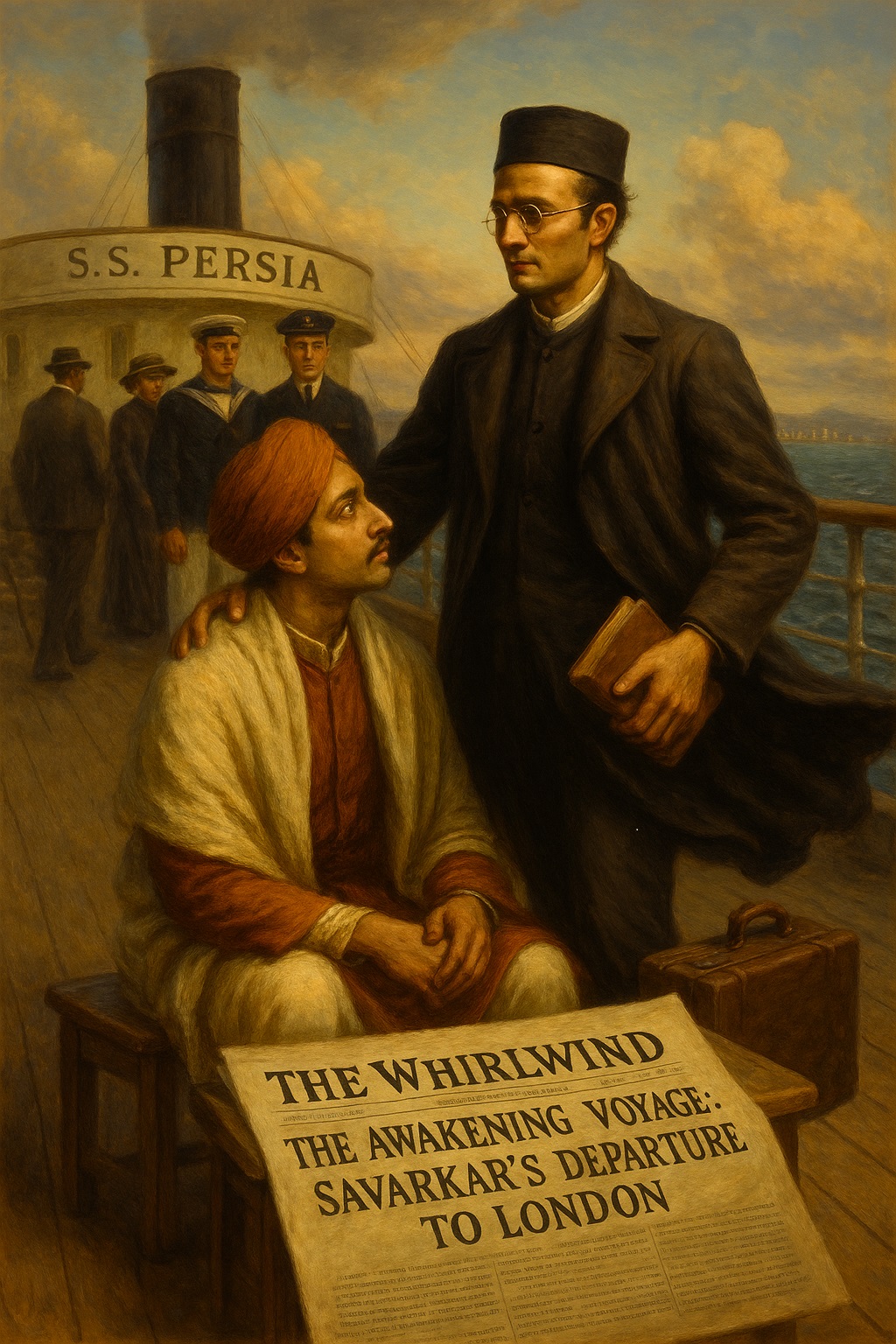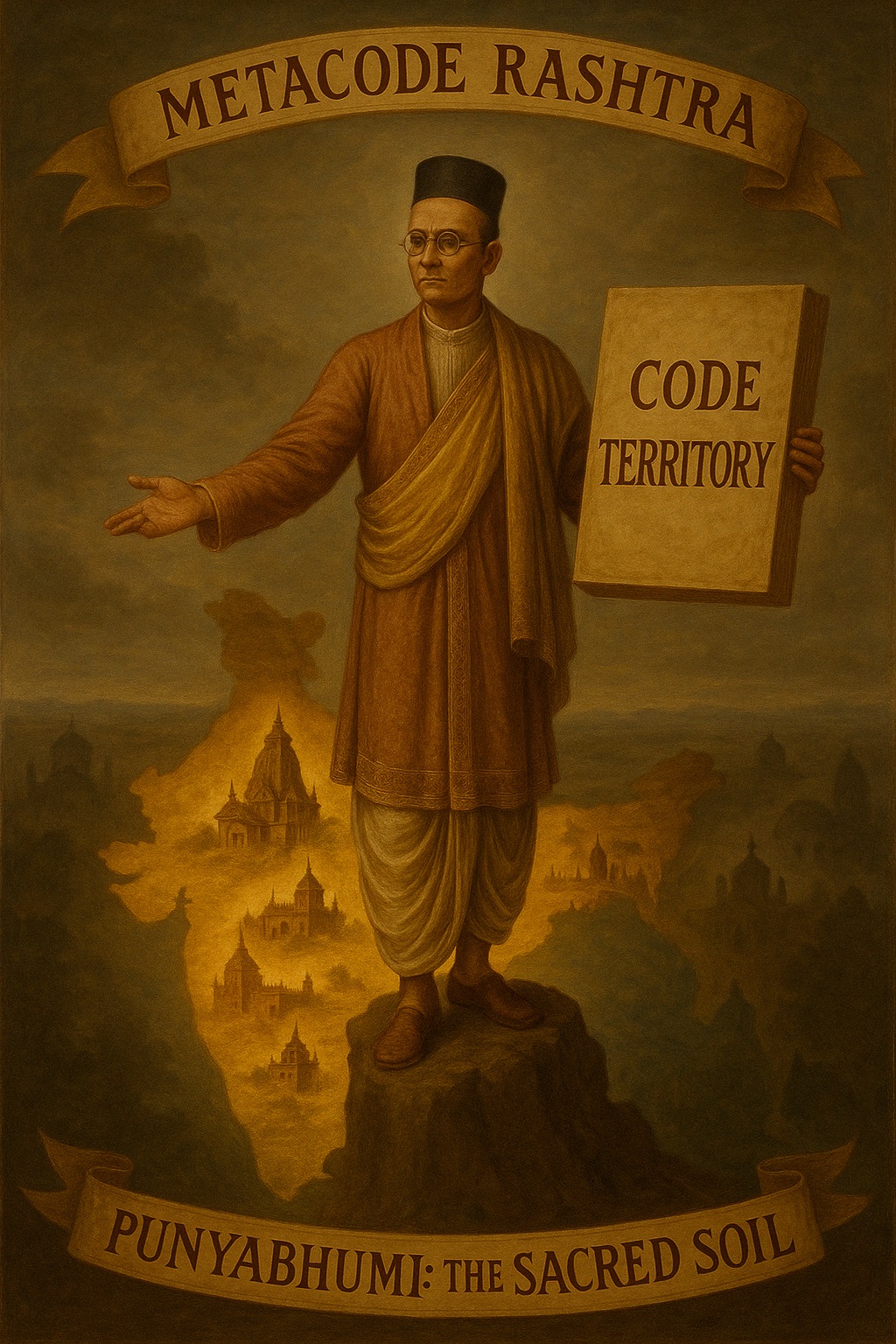Tag: Savarkar
-
In the closing years of the 19th century, a sixteen-year-old Vinayak Damodar Savarkar ignited a spark of revolution by founding Mitra Mela in Nashik, Maharashtra. Conceived in 1899, the group was more than just a circle of friends—it was a secret society devoted to India’s absolute political independence from British rule. Inspired by Mazzini’s Young…
-
Among the many revolutionary groups that contributed to India’s independence struggle, Vinayak Damodar Savarkar’s Varnasena—also known as the “Monkey Brigade”—stands out as a unique and lesser-known force. Comprising primarily of young boys and teenagers, this covert group played a vital supporting role in the anti-colonial resistance of the early 20th century. Mythology Meets Revolution Inspired…
-
From clandestine arms smuggling to guerrilla warfare – how Savarkar’s secret society laid the groundwork for a militant nationalist uprising. Vinayak Damodar Savarkar understood a critical truth of political struggle: words alone – no matter how passionate or persuasive – are powerless without action. To that end, he moved beyond fiery speeches and writings, crafting…
-
One night, in the town of Bhagur, a boy stood before a statue of the armed Goddess Durga. This boy was Vinayak Damodar Savarkar, and the vow he took that night would ignite a revolutionary desire to stand up against British colonial rule in India. The immediate spark was the execution of the Chapekar brothers…
-
In 1897, Poona reeled under a brutal bubonic plague and even harsher British repression. To control the outbreak, British officials led by Collector Walter Rand enforced draconian measures – homes were raided, women harassed, and dignity trampled. While most of society watched in helpless silence, the Chapekar brothers – Damodar, Balakrishna, and Vasudev – chose…
-
In 1905, being in his early twenties, Vinayak Damodar (Veer) Savarkar emerged as a fiery student leader in Poona, galvanizing youth against British imperialism. A staunch proponent of Swadeshi, Savarkar saw the boycott of foreign goods as the moral counterpart to the political opposition to the Partition of Bengal by Viceroy Lord Curzon planned to…
-
On 24 January 1902, Vinayak Damodar Savarkar enrolled at the prestigious Fergusson College in Poona, undertaking a major in the arts with the aim of securing a Bachelor of Arts (B.A.) degree. At the turn of the century, Fergusson College had become a vibrant hub of nationalist thought and reformist energy. It attracted some of…
-
In June 1906, a young Vinayak Damodar Savarkar stepped aboard the S.S. Persia, setting sail for England. At first glance, it may have appeared to be a student’s voyage in pursuit of a legal education. But this journey would prove far more consequential—not just for Savarkar, but for the future of India’s freedom struggle. Funded…
-
Savarkar’s coding of Hindutva; Metacode Rashtra, Part 4; Code Territory (3/6) The concept of Punyabhumi, or “sacred land”, is central to Vinayak Damodar Savarkar’s definition of the Hindu Rashtra. While he acknowledges the geographical and territorial aspect of the nation (Pitribhu), he further elevates it by embedding a religious dimension, defining it as a “sacred…

